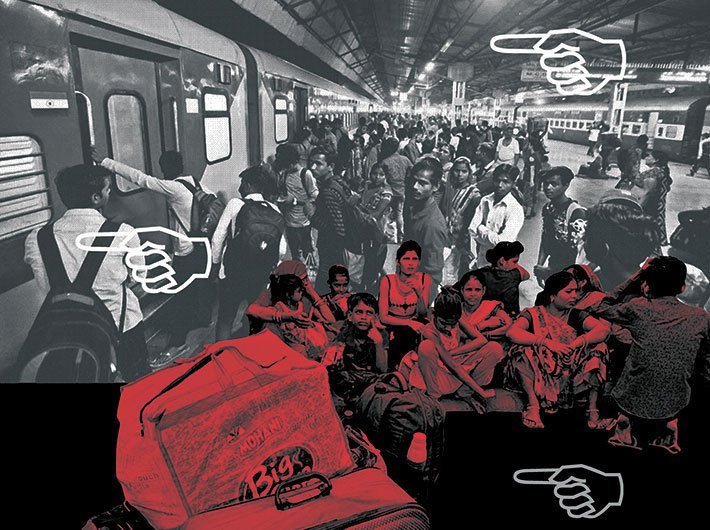Data on migration can play an integral role towards achieving Sustainable Development Goals. Lack of it is a big spoiler
“The 21st century is the century of human mobility and migration. We can no longer think about our economies, societies or cultures without thinking about human mobility.”
– Laura Thompson, deputy director general, International Organization for Migration
Unlike the Millennium Development Goals, the importance of migration in a country’s development trajectory has been captured within the UN Sustainable Development Goals (SDGs), best exemplified by the targets: regular, responsible migration and mobility of people (10.7), basic human rights (5.2, 8.7, 16.2), and labour rights (8.8). While there is growing global recognition of the integral role that well-managed migration plays towards sustainable development, there are measurement constraints owing to the lack of prominence, data on international migration. The Centre for Global Development calls this “an enormous blind spot” that has further limited our knowledge of migration flows and stocks.
Internal migratory flows within India are substantial, resulting in tremendous peripheral socio-political effects at the level of the migrants, their households and their communities. The majority of the interstate migrants in India suffer from identity issues which prevent them from availing basic services and restrict their access to social security benefits offered by the state and employers. Moreover, migrants’ registration is not required either at places of origin or destination, leading to a dearth of reliable data on migration in India. Today the sole data on migration is the infrequent and outdated migration ‘stock data’ from the Census (2011) and NSSO (2007-08). Owing to methodological limitations related to definitions, geographical unit of collection and reporting, etc., the Census and NSSO fail to capture the types of migration and further underestimate the increasingly dynamic migration figures. Though the 2011 Census estimated that 22.65 million out of the 453 million migrants have been staying in the same residence for less than a year, there is little macro-level knowledge regarding existing patterns of migration, as well as the barriers and enablers to effective and ethical labour migration. This limitation has severely hampered quality research and informed policymaking on migration in India. Migration surveys conducted by the Centre for Development Studies (CDS) in Kerala, Tamil Nadu, Goa and Punjab are some notable work in this direction but other states also need to follow suit. Efforts have also been made to measure migration using proxy data. For example, the Economic Survey 2016-17 using railway passenger traffic flows estimated an annual inter-state labour mobility average of 5-6 million people during 2001-11, aggregating to about 60 million inter-state migrant population. However, these proxy data are mere approximations based on assumptions, reinforcing the need for a precise and accurate state-level statistical account to guide policy between geographies of origin and destination.
Through a series of 12 policy briefs, the Overseas Development Institute has explored how instrumental migration will be in the progress of the SDGs by analysing the links between migration and development outcomes in key areas: poverty, decent work, urbanisation, gender, education, health, social protection, water and sanitation, energy, citizenship, technology, and climate change. Labour migration, especially, is predominant to India’s current development process and poses huge opportunities to leverage India’s demographic dividend.
Presently, at least at the level of the state, the Karnataka government has set up an International Migration Centre Karnataka (IMCK), an initiative for all matters related to overseas employment of intending international migrants from the state – an effort pioneered by the Department of Skill Development, Entrepreneurship and Livelihood (SDEL) which recognises labour mobility as an opportunity for upskilling and improved employability. Tasked to the Public Affairs Centre, a Bangalore-based think-tank, the IMCK looks to bolster potential labour migrants with resources to enable safe, humane and gainful labour migration for the state’s residents. Similar efforts by other states are called for to help India fast-track its progress towards achieving the 2030 Agenda.
In order to ensure that policy decisions for the management of internal and international migratory flows within India are well informed, the first step could be the introduction of nationwide periodic data collection methods on migratory flows and patterns. The UN Resolution on International Migration and Development, 2014 stressed on the need for disaggregated and internationally comparable statistics on migration which would be compatible in facilitating evidence-based decision-making in all relevant aspects of sustainable development. Statistical migration databases can be used to conduct predictive analysis to inform policy leading to better socio-economic planning and allocation of resources in the economy.
Without a change of approach towards migration and its due recognition within policy discourse, SDG Agenda 2030 cannot be achieved.
Agarwal is a programme officer with Public Affairs Centre.
(This article appears in the April 15, 2019 edition)
